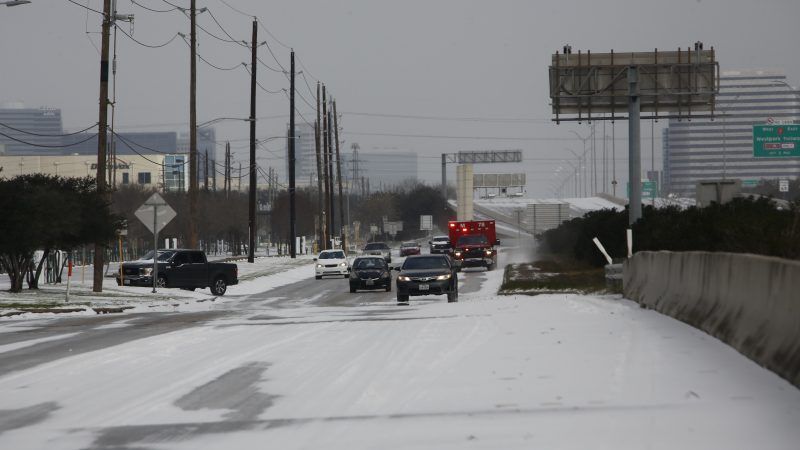Renewable Energy Is Not the Chief Cause of Texas' Power Outages
The vast majority of the shortfall is from failures at fossil fuel-powered plants.

President Joe Biden has declared a state of emergency in response to the rolling power outages now affecting millions of Texans during a deep arctic cold snap. What is causing the energy shortfall? In "A Deep Green Freeze," The Wall Street Journal's editorial board asserts that coal and nuclear power are "the most reliable sources of power." The editorial also states that "competition from heavily subsidized wind power and inexpensive natural gas, combined with stricter emissions regulation, has caused coal's share of Texas's electricity to plunge by more than half in a decade to 18%." The op-ed further notes that "wind's share has tripled to about 25% since 2010 and accounted for 42% of power last week before the freeze set in." The op-ed then balefully concludes: "The Biden Administration's plan to banish fossil fuels is a greater existential threat to Americans than climate change."
However, the editorial fails to mention one particularly salient fact. Most of the shortfall in electric power generation during the current cold snap is the result of natural gas and coal powered plants going offline.
"The wind is not solely to blame," explained Wade Schauer, a research director at energy research consultancy Wood Mackenzie to Bloomberg News. Of the 34 gigawatts generation capacity forced offline, Schauer estimates that about 27 gigawatts of coal, nuclear, and gas capacity is unavailable in part because the cold has driven up demand for natural gas for heating. "That's the bigger problem," he told Bloomberg News. The pipeline system is not able to deliver enough natural gas to supply both higher demand for home heating and power generation.
In fact, similar state-wide power outages previously occurred in February 2011 when wind and solar power constituted less than 4 percent of Texas' generation capacity. The Federal Energy Regulatory Commission's report on the 2011 weather event noted that 193 generating units failed, resulting in rolling power outages that affected 3.2 million customers. Most of the outages in 2011 occurred as a result of frozen sensors and valves and natural gas shortages. The same problems with insufficiently winterized equipment appear to be happening now.
With respect to the current episode, about half of Texas' wind turbines did freeze up. However, the Electric Reliability Council of Texas, a power grid operator, generally calculates that the turbines will generate only about 19 to 43 percent of their maximum output during the winter months. It is worth noting that winds from the storm were boosting power production from the unfrozen coastal wind turbines and thus offsetting some of the other power generation losses.
Maintaining electric power gird reliability while integrating ever more renewable power supplies is not a simple problem, but that does not seem to be the main issue with the current outages in Texas.


Show Comments (257)